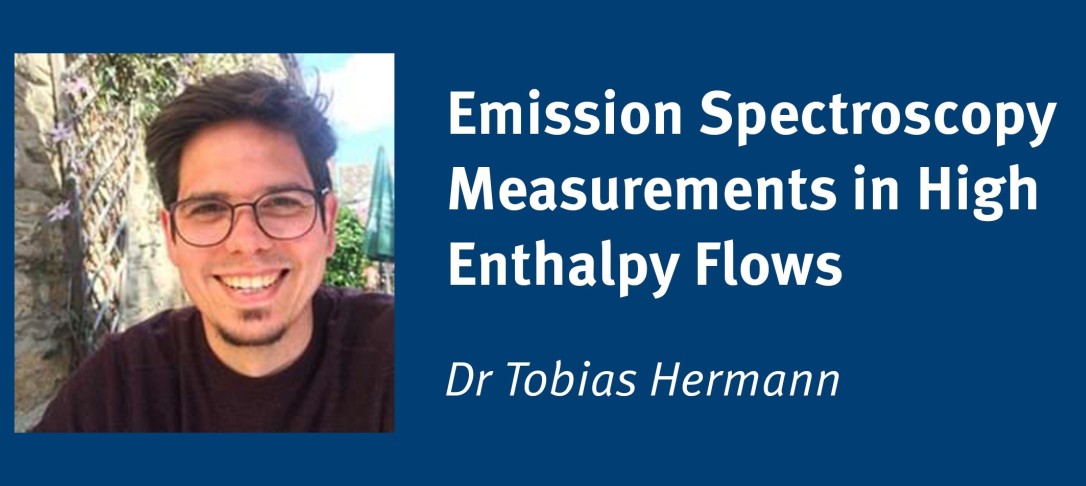
During spacecraft entry into planetary atmospheres, the gas around the space capsule is strongly compressed as the large kinetic energy of the hypervelocity flow is transferred into internal energy. This leads to very high surface heat transfer to the vehicle which is compensated by a heat shield.
To date, these thermal protection systems are oversized due to the uncertainty we encounter in predicting the flowfield.
One way to improve our understanding is to conduct ground-based experiments in wind tunnels which simulate the real high enthalpy flow of a flight case. A major challenge in using these experiments to improve our understanding are the complex measurement techniques and the interpretation of the data gathered through them.
Many traditional aerodynamic measurement techniques are difficult to employ due to the extreme high temperature and high pressure environment.
Emission spectroscopy uses the natural radiation from these flows to investigate the thermodynamic flow state. The technique separates the light emitted from the flow into its spectral components. The resulting spectra are collected and used to infer thermodynamic parameters without the need for intrusive measurement devices.
Through the use of statistical thermodynamic theory, temperatures and particle densities can be inferred from an in-depth analysis of these spectra by assessing the population density of exited quantum states of atoms and molecules.
Speaker: Dr. Tobias Hermann, University of Oxford
Tobias attended the University of Stuttgart as an undergraduate and finished his Dipl.-Ing. degree in Aerospace Engineering in 2012. He then worked as a post-graduate student within the High Enthalpy Flow Diagnostics Group at the Institute of Space Systems at the University of Stuttgart obtaining his Dr.-Ing. degree in 2017.
His thesis was focused on improving the understanding of the phenomena occurring during the re-entry of spacecraft into the Earth’s atmosphere. The main goal of the project was the identification and quantification of the aerothermochemistry leading to an interaction of the radiating gas with the ablating material. Tobias developed various optical diagnostic methods including Vacuum Ultraviolet spectroscopy systems, tomographic emission spectrographs, and radiometric measurement devices.
Since 2017, Tobias was working as a Post-Doc in the Oxford Hypersonics group of the Oxford Thermofluids Institute, where he mainly worked on the topic of transpiration cooling, an active cooling technique for spacecraft heat shields. He developed analytical methods for heat transfer in porous media, system engineering tools, and transpiration cooled wind-tunnel experiments.
He also developed various diagnostic techniques such as heat flux measurements to porous media, total temperature measurements, pressure sensitive paint systems, high speed focused and regular optical Schlieren systems.
Tobias started working as a Senior Research Associate in 2019 on transpiration cooling where he focused his research on the application of fundamental research to an applied system.
Since 2021, Tobias is working as a UKRI Future Leaders Fellow on high enthalpy experimental research which includes wind tunnel experiments with the multi-mode facility T6, and the development of optical diagnostic techniques. His research interests lie in the field of high enthalpy non-equilibrium flows and in the development of measurement and instrumentation techniques.


